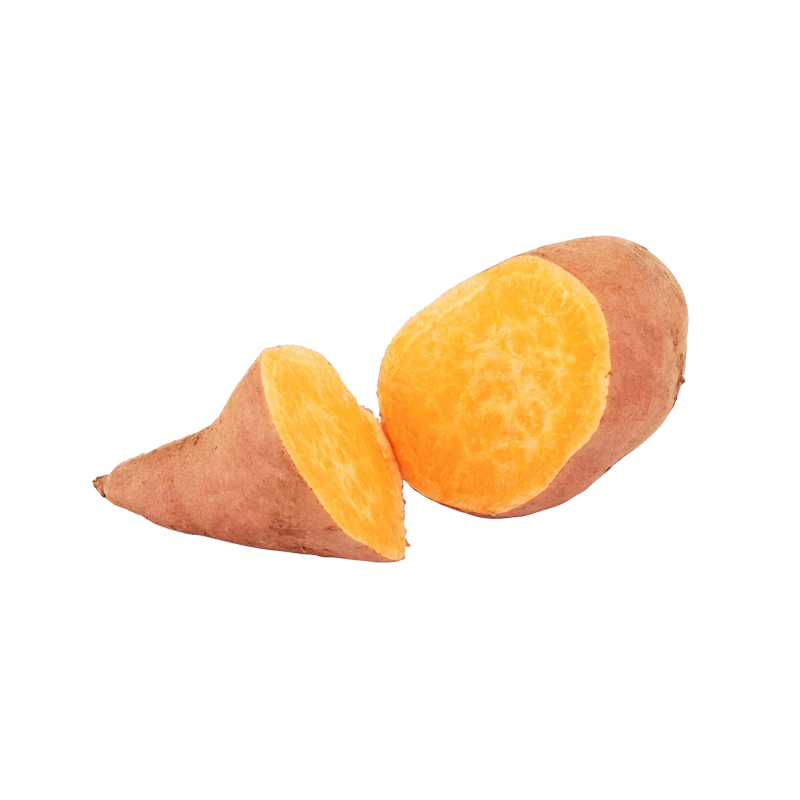Yam — Nutrients, Health Benefits, And Shopping Tips

Written by Listonic Team
Last update on September 4, 2024
Yam nutrients
Nutrition facts
Amount per 100 g
Calories
🔥 118 kcal
| Nutrition per: 100 g | Value | % Daily Value* |
|---|---|---|
| Carbs | 28 g | 10.18% |
| Fiber | 4 g | 14.29% |
| Sugars | 1 g | 2% |
| Glycemic Index | 54 | - |
| Protein | 2 g | 4% |
| Sodium | 9 mg | 0.39% |
| Total Fat | 0 g | - |
*The % of Daily Value (DV) tells you how much a nutrient in a serving of food contributes to a daily diet. 2,000 calories a day is used for general nutrition advice.
Yams are a good source of vitamin C, dietary fiber, and are high in potassium.
Encyclopedia of Foods. A Guide to Healthy Nutrition
54
🟢 Low Glycemic Index
Yam facts & tips
Health benefits
- Rich in vitamins and minerals such as Vitamin C, Vitamin B6, potassium, and manganese, which support overall health and well-being.
- High in fiber, which promotes digestive health, regular bowel movements, and maintaining a healthy gut microbiome.
- Provides sustained energy from complex carbohydrates, making it a good source of fuel for the body and brain.
- Contains antioxidants, which help protect the body from free radicals and reduce inflammation.
- Supports heart health by helping to lower blood pressure and reduce the risk of heart disease due to its high potassium content.
- May support blood sugar control, making it beneficial for individuals with diabetes or insulin resistance.
Health risks
- High carbohydrate content which can cause rapid spikes in blood sugar levels, particularly concerning for diabetics when consumed in large quantities.
- Potential for digestive discomfort such as bloating or gas when consumed in large quantities, particularly due to their high fiber content.
- Risk of allergic reactions in some individuals, particularly those allergic to yams or related tubers, causing symptoms like itching, swelling, or difficulty breathing.
- Potential for pesticide residue on conventionally grown yams, which can pose health risks if not properly washed or sourced from organic suppliers.
- Low nutrient density compared to other vegetables, especially if yams are prepared with added sugars or fats, which can reduce their overall health benefits.
How to choose yam
Yams should be firm and have smooth skin with no cuts or bruises. The flesh should be hard and the skin should have a uniform color, indicating freshness and proper storage.
Avoid yams that are soft or have dark spots, as these are signs they have begun to spoil. Yams with a wrinkled texture or that feel lighter than they appear should also be avoided, as they may not cook evenly or offer the best flavor.

How to store yam
Yams should be stored in a cool, dark place with good ventilation. Proper storage maintains their freshness and firmness for up to two weeks. Keeping them dry is essential.
Moisture can cause yams to spoil quickly. Avoid storing in plastic bags, which can trap moisture. Using a paper bag or a well-ventilated basket ensures they stay fresh and ready for cooking, preserving their texture and flavor.
✅ Extra Tip
How long does it last?
Yams can last for 2-3 weeks when stored in a cool, dark place. Once cooked, yams should be consumed within 3-5 days if kept in the refrigerator. Proper storage helps maintain their freshness and flavor, making them a versatile ingredient for various dishes. Always check for signs of spoilage before consuming.
What to do with leftovers?
Leftover yams can be used in a variety of savory and sweet dishes. Roast them with olive oil, garlic, and herbs for a simple side dish, or mash them with butter and cream for a comforting mashed yam. Yams are also great when used in a yam casserole with marshmallows, brown sugar, and pecans.
Use yams in a yam soup by simmering them with broth, onions, and spices, then blending until smooth. If you have a lot of yams, consider making a batch of yam fries by slicing the yams into sticks, tossing with oil and spices, and baking until crispy. Yams can also be sliced and baked into scalloped yams with layers of cheese and cream, or used as a topping for shepherd's pie with ground meat and vegetables. For a quick snack, enjoy yams with a sprinkle of cinnamon and brown sugar, or toss them with olive oil and roast for a crispy treat.
👨⚕️️ Medical disclaimer
Discover products from other categories
Listonic Team
Fact-checked
Our editorial team checked this article to make sure it was accurate at the time of publishing it.
Get the top-rated shopping list app

yam
1 piece







